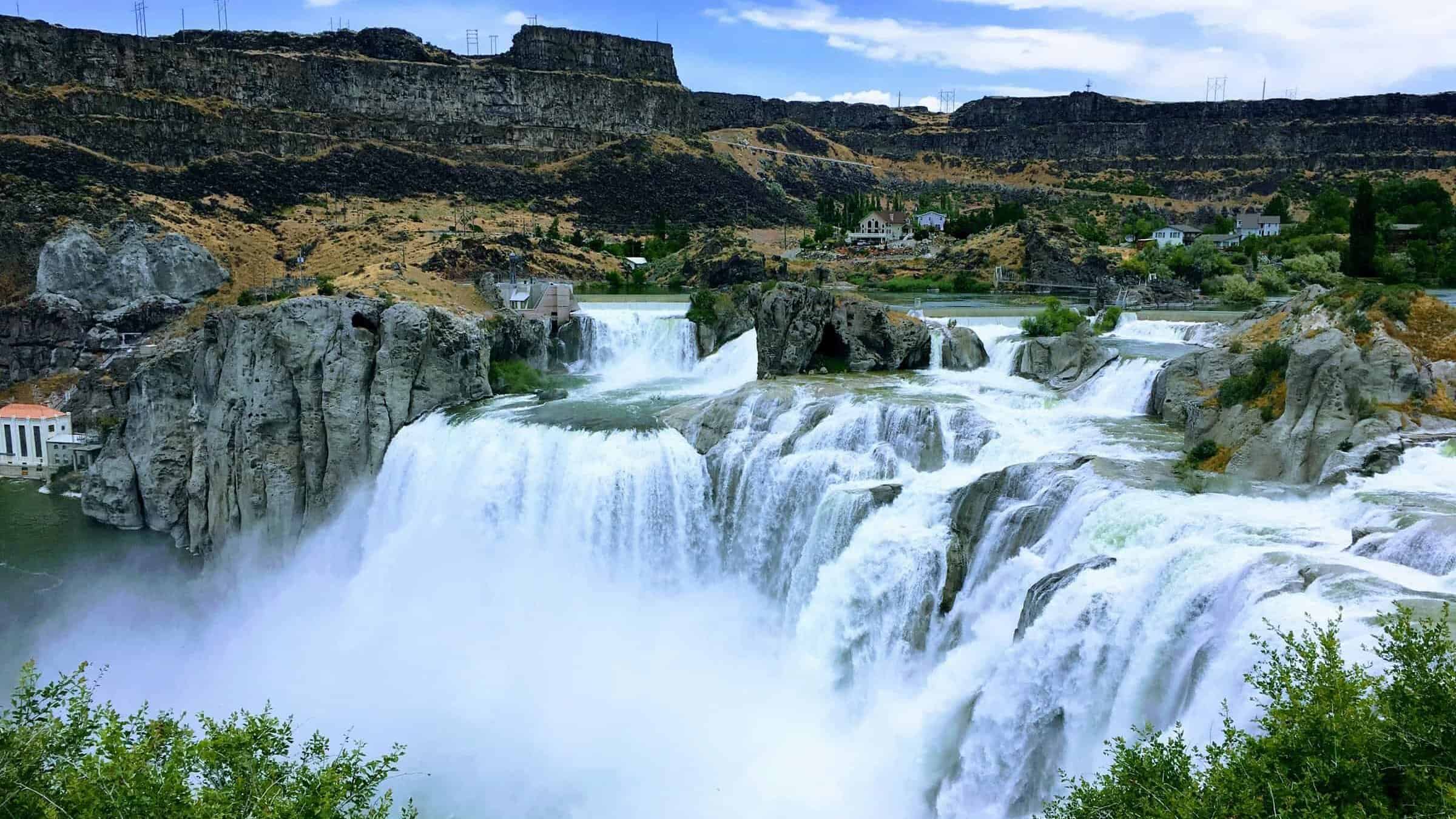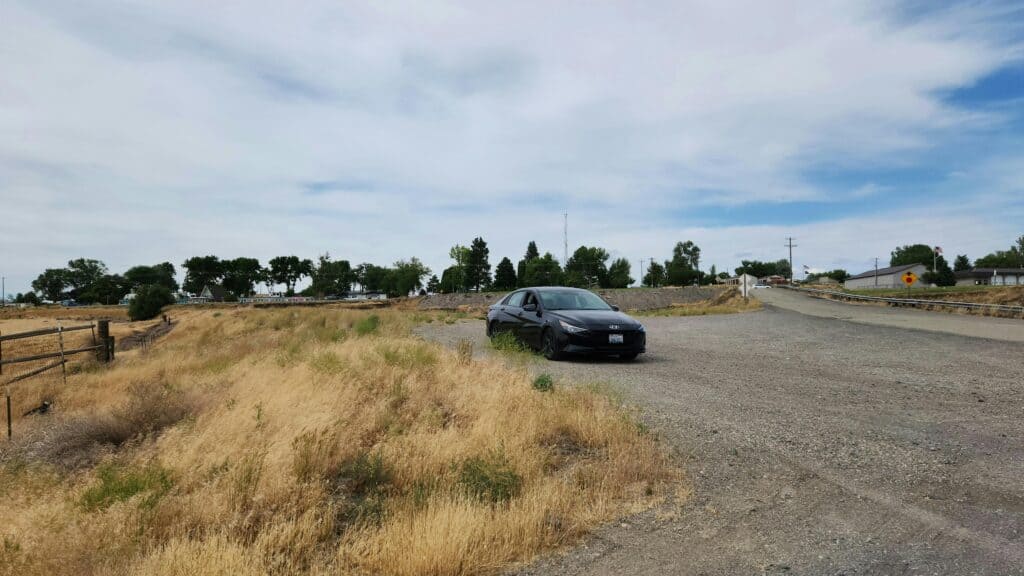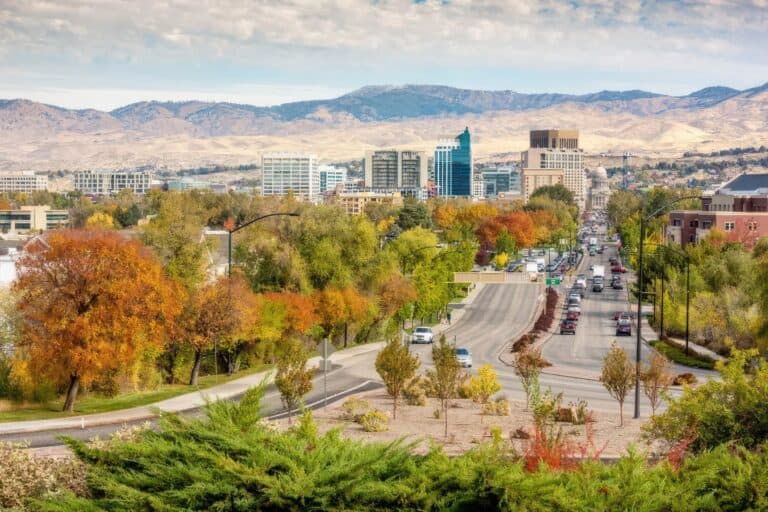What is the Cost of Living in Idaho?
If you’re wondering how much it will cost you to live in Idaho, you’ll find the answer in this article.
We’ll estimate the amount of money needed by Idaho residents to meet all basic living expenses.
Those looking to escape the hectic pace of big-city life are flocking to Idaho in droves for its picture-postcard scenery, tight-knit communities, and fantastic recreational opportunities. Want the lowdown on the cost of living in Idaho, including housing prices, utility expenses, grocery costs, and taxes? This guide offers all that and more.

Idaho Cost of Living
Is it expensive to live in Idaho?
It depends on which part of the state you settle in.
In November 2024, the average home value in Idaho was $451,003, which is 26% higher than the national median of $357,469.
However, statistics can be deceiving. In bigger cities like Boise and Meridian, homes are typically more expensive. These pricier areas drive up state averages, making Idaho seem less affordable than it actually is. In fact, smaller cities and suburban areas, such as Idaho Falls and Twin Falls, offer tons of budget-friendly options, making Idaho an ideal choice for people seeking more bang for their buck.
If you’re looking to rent, keep in mind that demand for apartments and single-family homes is escalating, especially in Boise. However, rental costs are typically lower than those found in coastal states like California and Washington.
What is the average rent in Idaho?
As of December 2024, the average monthly rent in Idaho is $1,096.
One-bedroom apartments cost approximately $823, and two-bedrooms run about $1,027. By contrast, the average national rent is roughly $1,495 for a one-bedroom and $1,725 for a two-bedroom apartment. So if you’re looking to rent, you’ll pay significantly less in Idaho than in most other states.
Idaho Living Cost: Utilities
In Idaho, the average monthly utility bill is about $367.80, notably lower than the national average of $429.33. This figure includes essentials like electricity, gas, and water. For example, electricity costs in Boise are about 28% less than they are nationally, with residents paying around 11.36 cents per kWh.
Heating a single-family home with natural gas usually runs about $88 a month in Idaho. In winter, when the heat’s on full blast, however, it may run closer to $129. For electric heat, the average monthly bill is approximately $113, with costs rising to about $136 during the colder months.
Propane costs about $2.44 per gallon in Idaho. Based on the 750 to 1,000 gallons most of the state’s households use per year, annual propane heating expenses are approximately $1,830 to $2,440.
There are few data on Idaho oil prices because oil is not a commonly used heating method in the state.
Idaho Living Expenses: Internet and Cellular
In Idaho, high-speed internet plans typically start around $59 per month. Cell phone plans are as low as $5 monthly if you’re okay with the bare minimum. However, if you’re looking for all the bells and whistles, the average cost of a standard plan in the state is approximately the same as it is nationally—around $114.
If you’re looking for cheaper options, mobile virtual network operators (MVNOs) are worth a look—they piggyback on the networks used by major providers but typically cost less.
Transportation Expenses
Gas prices are typically lower in Idaho than they are nationally—fantastic news if you plan to take long drives to soak in all the natural beauty the state is known for.
What is the cost of car insurance in Idaho?
Idaho drivers pay approximately $1,018 annually for auto insurance, about 29% less than the national average.
The base prices for passenger car registration are $48 for vehicles 1–2 years old, $36 for vehicles 3–6 years old, and $24 for vehicles 7 years or older.
You might be charged additional fees depending on factors like the size of your car, the fuel it runs on, and the county you live in. For instance, electric vehicles incur an additional $140 fee, and plug-in hybrids an extra $75. Driver’s license renewals, which are required every eight years, cost $30.
How expensive are car maintenance and repairs in Idaho?
Vehicle owners in Idaho can expect to spend approximately $762 annually on maintenance and repairs, which is below the national average.
This estimate includes routine services such as oil changes, tire rotations, brake replacements, and other necessary upkeep.
While Idaho has public transportation, it’s mostly limited to bigger cities. For example, Boise’s Valley Regional Transit has a decent bus network. However, in rural areas, you’ll probably have to rely on your own set of wheels.
The good news is that Idaho’s commute times are shorter than those in most other places. This means you’ll have more time for hiking, fishing, or relaxing at home.

Food Costs
How expensive are groceries in Idaho?
For most Idahoans, grocery bills are slightly below the national average. A typical household spends around $275 per month, though costs vary based on family size and shopping habits.
Idaho’s grocery costs are typically lower than those in Oregon and Washington, where prices are driven up by taxes and generally higher living costs. The biggest reason food is cheaper in Idaho is that the state grows a lot of it. Those world-famous Idaho potatoes, locally produced dairy, and other farm-fresh products help keep grocery prices in the state competitive. However, Idaho’s grocery prices are slightly higher than those in neighboring Utah.
Is it expensive to eat out in Idaho?
Those who like to eat out should consider that the average cost for a three-course meal for two people at a mid-range restaurant in Boise is approximately $70.
Healthcare and Insurance
What does Idaho spend on healthcare?
In 2020, healthcare spending in Idaho averaged $9,520 per person, well below the national average.
In fact, the state ranks 50th in the nation for per capita healthcare costs, indicating that the average Idahoan pays less for healthcare than the average resident of any other state. In Idaho, a 40-year-old non-smoker can expect to pay around $350 a month for a standard health insurance plan.
What is the average cost of health insurance in Idaho?
Health insurance premiums in Idaho vary significantly, however, based on location and coverage, and as in most other states, they’re rising. Individual market plans are set to increase by an average of 5% in 2025, while small group market plans will rise 9%.
Premiums vary by county thanks to differences in healthcare costs and provider networks. For example, the average monthly premium for a 2025 bronze plan in Idaho is expected to be around $307. But that figure fluctuates across counties.
Prescription drug copays also vary across plans, starting at about $10 for generic medications and going up to $100 for pricier specialty drugs.
Does Idaho have low income health insurance?
Idaho has programs to help ease the strain of healthcare costs for those who qualify. Medicaid offers a variety of programs for low-income residents. The State Health Insurance Assistance Program (SHIP) also provides free Medicare counseling to help with healthcare expenses.
Education
How does Idaho rank in education spending?
Idaho’s public schools meet the educational needs of over 314,000 students across 795 schools. Funding primarily comes from state sources, which account for over 60% of public school revenue. In 2020, Idaho allocated over $2 billion to K–12 schools.
Despite this investment, Idaho’s per-student spending remains the lowest of all states, ranking Idaho 50th in the nation for per capita education expenditures. Local property taxes provide most of the funding, with rates varying across districts.
How much are private schools in Idaho?
For parents considering private or charter schools in Idaho, tuition typically ranges from $4,000 to $15,000 per year, depending on the institution and its offerings. Charter schools are tuition free but usually charge additional fees for activities and materials.
When it comes to higher education, colleges like Boise State University and the University of Idaho are fantastic options for residents. The average in-state tuition for public colleges in Idaho is approximately $8,578 per year, while out-of-state students pay around $23,488.

Childcare
Childcare costs in Idaho depend on factors like child age, type of care, and location. Center-based care runs about $915 a month for infants, while family childcare (i.e., care provided in a caregiver’s home) averages $900.
Costs drop a bit as kids get older—preschoolers’ care averages $800 at centers and $795 in family childcare. After-school programs for children in Idaho typically cost between $280 and $750 per month, depending on the provider and services offered.
Childcare costs can put a significant dent in a family’s budget. For a married couple in Idaho, center-based infant care typically consumes about 10% of their yearly income. It’s a much bigger hit for single parents—around 32% of their earnings.
Childcare costs in urban areas like Boise and Meridian are generally higher due to increased demand and operational expenses, with weekly infant care costs ranging from $200 to $300. Rural areas usually offer more affordable options, averaging between $150 and $200 weekly.
Taxes in Idaho
What is the Idaho state income tax rate?
In 2023, Idaho adopted a flat income tax rate of 5.8%.
The state’s sales tax is 6%, but in some areas, you’ll see an additional local tax of up to 3%. On the bright side, prescription medications are tax free, which helps with healthcare costs.
What are Idaho property taxes like?
Compared to other states, Idaho maintains affordable property taxes. On average, homeowners pay about $3,112 a year. That works out to an effective tax rate of 0.69%, ranking Idaho among the states with the lowest property tax burdens.
Standard of Living and Quality of Life
Idaho’s natural beauty and abundant outdoor recreational opportunities contribute to a high quality of life. With an average commute time of just under 21 minutes, residents enjoy more leisure time than those in more congested states, which fosters a healthy life-work balance.
In fact, Idaho placed fifth in the 2024 U.S. News Best States ranking. Scores are based on thousands of data points, including health care, education, economy, infrastructure, public safety, and natural environment.

Conclusion
So, is Idaho cheap to live in? We hope we have answered this question to your satisfaction.
Idaho’s living cost can feel like a breath of fresh mountain air, especially when compared to that in coastal states. But let’s not paint with too broad a brush. The cost of living in Idaho varies greatly across areas.
Idaho’s bigger cities, especially the vibrant Boise metro area, have higher housing and service costs, while its rural areas offer highly budget-friendly lifestyles. That said, Idaho’s quality of life—short commutes, outdoor adventures, and tight-knit rural communities—is a huge reason so many are flocking to the state these days.
Whether or not Idaho is affordable depends on your lifestyle and priorities. Take the time to research its various areas, plan your budget, review the relevant job markets, and weigh the amenities that matter most to you.





